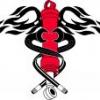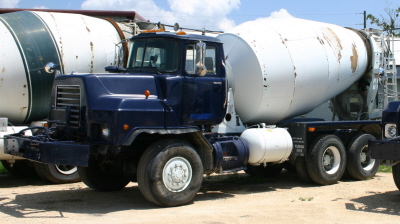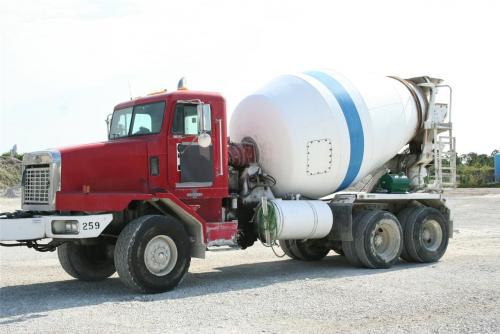-
Posts
193 -
Joined
-
Last visited
Content Type
Profiles
Forums
Gallery
Events
Blogs
BMT Wiki
Collections
Store
Everything posted by Maxville Truck
-

What Are The Avaible Gear Raitos For A Mack Axle?
Maxville Truck replied to 75CF611's topic in Driveline and Suspension
I deal a little with a few of the allison tranny's in newer MR's..... First off the following ratio's are available for your rear end 3.71*, 4.00**, 4.25, 4.62, 4.88*, 5.43, 5.78, 6.36, 6.80*, 7.48, 7.85, 8.39*, 8.83 & 9.87 second off your transmission Probably has the following ratios... First...................................3.69:1 Second...............................2.02:1 Third...................................1.38:1 Fourth..................................1.00:1 Reverse.................................6.04:1 this does not account for your torque converter ratio which may be any of the following Stall torque ratio.........TC 487-1.50; TC 488-1.70; TC 497-2.72; TC 470-2.83; TC 495-2.39; TC 496-1.78; TC 498-2.45; TC 499-1.91 I'm going to make a few assumptions...... If you have 11r 22.5 tires then you may have been turning approximately 2250 rpm to achieve 43 mph.... (41.3 inch tire diameter). I have a little spread sheet that I worked out to help with road speed calculations.... to achieve 70 you need to use the 4.0 ratio. (69.11mph) if you use the 3.71 ratio you will get a speed of (74.5mph) (assuming my guess on tire size and RPM is correct. Most of the MR's that come in with ht 740's have 4.42 or a little higher and will get to just about 60 mph. After a little "pump tweaking" the 300 e-7's will throw rocks when you mash them down (empty of course). I Realize you have a thermodyne. I'm not sure of the HP, "237" maybe.... My Recommendation would be the 4.62 ratio with a spicer or equivalent auxiliary box. If a box with .81 over drive is used your road speed would be about 73MPH. I use an auxiliary box manufactured from the back box off of an eaton fuller transmission, I always use the under drive models for my particular use however the person that makes these boxes does offer and over under version I'm not sure of the ratio of that particular box. (3 speed) they typically run around $2500 with out shipping they are air shifted and will include what ever yoke size you need. any more questions you can reach me directly @ 715-279-5550 Chris -

Regenerate --diesel Particulate Filter
Maxville Truck replied to toddrnlds's topic in Engine and Transmission
WHere are you located? I have set up a few feed trucks. for some of my customers, none of which were new trucks though.... I know what your going though though typically the trucks don't see enough "work" to get them warmed up that well the biggest thing we have to worry about is thermostats, and complaints of poor heater operation.... On a side note do you have to go road speeds? Do you have problems with the trucks not going slow enough for feedout? What type of mixer do you use? Vertical, Reel, auger type? any ways good luck with the dpf.... -

They Cancelled My Swimming Lessons For Today:
Maxville Truck replied to Rob's topic in Odds and Ends
Hey my dodge started without being plugged in!!!! 2500 5.9 gasser my digital thermo on the truck read -39 on the way to the shop... one in the house only showed -37.6, of course grandma's good old mercury thermometer read -41 at about 7:45 this morning. not bragg'n or complaining.. just thankful I purchased a "used" used oil furnace to help out the wood boiler at the shop!! west central WI !!! -
Looks like I will be sticking with my tryed and true friend.... the mack trucks (of course all of this is dependant on securing the "proper" financing) I'm most familiar with the drive trains and have lots of spare parts around, anyone here ever reduce the capacity of front springs for a better ride? These 6x6 dmm's have a pretty beefy front end and I wont be needed that much spring..... so for rider comfort i am considering reducing front spring capacity, also can the dmm be converted to an air ride cab?
-
In my opinion it was a good system but limited to air flow capacity, hence limiting HP. an air to air not only cools the boosted air as does the tip turbine but also creates a "reserve" of boosted air for the intake valves when the open. I observed a pressure gauge on a pulling tractor one time on an old massey 1130, while playing around with different turbos and intakes and charge air coolers, what i noticed was with just a turbo and stock "restrictive" intake the pressure gauge would flutter with each opening of the intake valves........ after installing an air to air, same turbo and intake mind you... the pressure gauge fluttered less ( more available to the intake for the short period of that it opens) and i gained some power.... then after building a larger intake and massaging (porting) the head i seen a bigger gain. of course i eventually blew a head gasket , scored a piston, broke a rod etc, etc. My theory is this though.... i believe that you could could see virtually the same gain from an over sized intake manifold and a little water injection as you could from just the air to air. Ever use a cheetah bead blaster to seat a tire on a rim? the large volume of air available is what seats the bead. your intake valve is open for a vary small time frame and if the volume of boosted air is not large enough behind it. the combustion chamber only gets so much air..... I could ramble on all morning....
-
One of my concerns is the m11 known to have "block fretting" especially if turned up.... my limited experience with them has been mostly with the STC l-10's and one m-11 in a dump truck. none of which have been a problem, also it is less expensive to jake up the mack than it is the m-11, but i do agree that the LL trans mision would be a plus... anyone here ever drive one of those oshkosh highlands?, i've never seen one up close....
-
I'm looking to add some "rigs" to my manure truck fleet I currnetly have 4000 gallon tanks on the backs of a few mack trucks. I'm looking to increase capacity "per unit" by going to semi tanker setups with 6300 gallon tanks but I still want to "offroad" them so I figured 6x6 semi's I'm down to 2 truck choices for pretty much the same money either 96 DMM 6x6's with em7-275's and t2060's, or 1997 oshkosh highlands with m-11 cummins and eaton transmissions (something LL's) and eaton axles. either one will have to be shortened i believe and the HP turned up.. i will also be installing jakes. any suggestions would be greatly appreciated. :SMOKIE-LFT:
-

Trucking News: Diesel Prices Fall to Lowest Level Since 2005
Maxville Truck replied to WattsMack's topic in Trucking News
OOOOOOOOooooooOOOOOOHHH 2005 how about 1975 -
-

Mack Ch 1999 Check Engine Codes
Maxville Truck replied to johnka's topic in Electrical, Electronics and Lighting
3-2 blink code is for erratic or missing rpm/speed sensor. check your connections to the tach sensor. I believe it is located somewhere in the bell housing. round and threaded with wires coming out of it. near the ring gear. (the computer counts the teeth in the ring gear to determine rpm etc. Good Luck -
Dynatards are cam operated...... they open the exhaust valve early on a special designed "second lobe of the cam shaft" the exhaust lobe has a slight second lobe ground into it that is below the lash setting of the exhaust valve. when you turn it on, the dynatard closes that gap and gives you :SMOKIE-LFT: your engine brake. A jake ,pacbrake, or tecbrake, use an adjacent intake valve to engage the exhaust valve for the braking action.
-
Come on just about any trick you can muster up will work, I use the old stand by clothes pins......
-
I'll add that it is a pretty easy install. Torch your old one out ream your holes larger, slip it in, tighten the bolts... I removed both the "manure tank" and the log bed before we did the installs.. You want the Eagle trunion stand from Stengel Brothers. http://www.stengelbros.com/MackParts.htm
-

Wanted T2070 Transmission
Maxville Truck replied to ncdumptrucker's topic in Engine and Transmission
short or long compound rear box? -
Tim I just aquired an older 4230 with syncro 8 transmision, about 8543 hours, needs a little TLC in the shifter console. When going into the 6-8 area you have to fiddle with it to get into 6th 8th is fine. I think it just needs bushings or a good tightening and adjustment. This tractor will be $12,000 firm. I most likely will be correcting the shifting problem and listing it on Ebay.
-
Do You want a reman or good used take out? On a budget?
-
Which injection pump? ambac or bosch.? try a moderate amount first. I often wondered why somebody doesnt make an after market aneroid device that has a longer travel than the factory bosch one.... allowing for a greater increase in "turning the pump up" without getting all the black smoke..
-
That transmission is meant to be shifted as a "5 speed" the low range is really only for putting around in the field (in your application) or jobsite use as a cement or dump truck. One thing that may help you if you have a low rpm engine...... have your local mack dealer set the top rpm to 2100. it will shift a little easier, your engine is designed to have the torque to pull from the lower rpms, a little tough to get used to i understand..
-
The 21 lbs is still a little "weak" number in my opinion, I'd be looking for a leak or intake restriction (air filter). I've rode in "noid93s" CH it jumps to that 30 plus mark within seconds of jumping on the accelerator.
-
Tim, My quess is the delivery valve in the injection pump was not sealing properly..... after running it for an extended period it finnally sealed back up. if that was the case your injection line was bleeding fuel back into the pump and would not have enough fuel to "pop" the injector off right.... or one injector was "dirty" and leaking down causing the same effect. By the way, I have a bosch pump on an early 80's 285 that would fit your engine (top end cab fire) pump and lines are good. turbo and tip turbine sustained damge. if your interested... Chris
-
Radiator water level, water temp, and oil pressure......
-
Yes absolutely!! I've put jakes on 2 ch's in the past month. Is your engine electronic or mechanical? (it doesn't matter) If its mechanical (injection pump) you'll need more switches. Check this link out. http://www.bigmacktrucks.com/index.php?s=&...ost&p=20960
-
Fuel and air my friend , fuel and air... Which injection pump do you have? I can tell you how to hop up either one.... but be warned lots of power may equate to problems...... I'm sure that there are smarter people in here than me that will tell you all the ins and outs of increased hp. Fuel and air, fuel and air. turn the rpm's up a few hundred and crank the injection pump up should easily get close to 650 to 700 just by doing those 2 things alone.. If thats not enough then you will have to opt for a higher capacity turbo, then from their your be balancing and blue printing your engine cutting your pistons enlarging your injectors building custom intake and exhaust manifolds custom built crankshaft girdling your bottom end getting a custom built steel flywheel and special high rpm "slipper" clutch special built injection pump for 2000 to 3000 hp maybe then a compuond turbo setup oh yeah did I forget the water/methanol injection all theory for me though all i've played with is an old Massey Ferguson 1100 tractor
-

Non Posting Members:
Maxville Truck replied to Rob's topic in Antique and Classic Mack Trucks General Discussion
Rob, Are you a trucker? Your avatar shows a corn field in the backdrop... just curious... I agree with you though it is nice to get a wide variety of different views of ways to repair problems we all have. B) -

Brakes
Maxville Truck replied to 609albert's topic in Antique and Classic Mack Trucks General Discussion
Fill the resevoir first.... then with a helper attemp to blead the air out. start at the farthest wheel then work your way to the front. If your cant get anything to happen, you might as well start with a new master cylinder. Your will most likely need the following componets 1. Brake Lines, both rubber and steel 2. master cylinder 3. new bleeder screws or just the entire wheel cylinders (depending on how much acetylene or propane your use.... ) 4. Booster cylinder.. 5. possibly brake shoes, springs, adjuster kits etc. Good Luck!!
BigMackTrucks.com
BigMackTrucks.com is a support forum for antique, classic and modern Mack Trucks! The forum is owned and maintained by Watt's Truck Center, Inc. an independent, full service Mack dealer. The forums are not affiliated with Mack Trucks, Inc.
Our Vendors and Advertisers
Thank you for your support!






